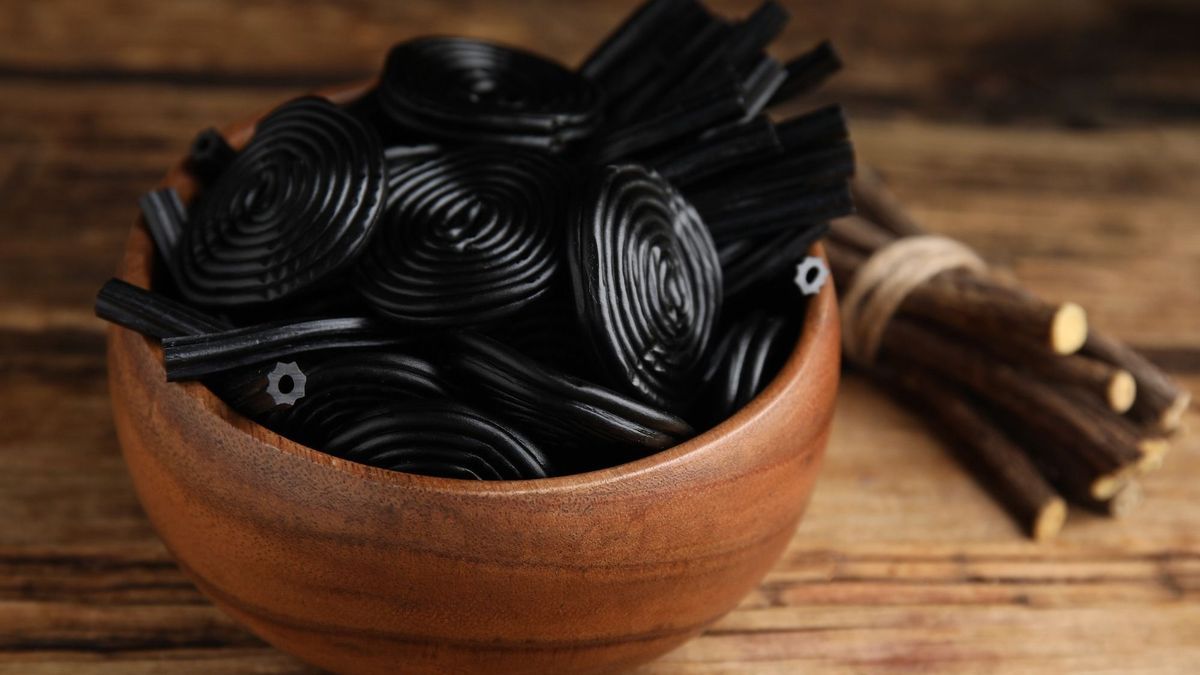
While enjoying licorice candy, an American suddenly collapsed. According to doctors, he died of an overdose of glycyrrhizic acid, a sugary substance present in these candies.
Deadly candy. Recently, a 54-year-old man died of cardiac arrest after consuming… too much liquorice. This man’s case was reported in the newspaper The New England Journal of Medicine.
Death linked to excess liquorice
According to the researchers, the man, a construction worker, did not present any particular health problems before “collapse” in a fast-food restaurant in Massachusetts. The emergency services, arriving on site just minutes after his illness, attempted cardiac resuscitation, without success.
Transported to hospital in a very unstable condition, then intubated, the patient finally succumbed to his ventricular fibrillation (a serious form of cardiac arrhythmia) – after just 32 hours.
According to the doctors’ diagnosis, if the patient died, it was because he consumed excess liquorice.
“Even a small amount of licorice you eat can raise your blood pressure a little“, underlines Dr Neel Butala, cardiologist at Massachusetts General Hospital who deciphers this case in the newspaper New England Journal of Medicine.
Before his illness, this construction worker had consumed nearly a bag and a half of licorice every day for two weeks.
Glycyrrhizin, a potentially fatal substance
According to the researchers, it was glycyrrhizic acid – an active ingredient in licorice known for its sweet flavor – which was responsible for the patient’s death.
And for good reason: when consumed in excess, it causes a drop in potassium levels in the body (hypokalemia). Fact which was confirmed in said patient.
The problem ? “Hypokalemia can lead to ventricular and atrial extrasystoles, ventricular and atrial tachyarrhythmias and 2nd and 3rd degree atrioventricular blocks; Eventually, ventricular fibrillation may occur. recalls the MSD Manual.
Ventricular fibrillation which killed the 54-year-old patient.
Licorice candy: no more than 56 grams per day!
In this context, what is the dose of licorice that should not be exceeded? According to a study by the Food and Drug Administration, a small amount of licorice is enough for the toxic effects of the plant to manifest.
Also, licorice lovers with a history of heart problems or aged 40 and over should not eat “more than 56 grams of licorice candies per day”, estimate the experts from the American Agency. Or just a few candies…
A compound found in other products
But glycyrrhizin isn’t just found in licorice candies. Due to its significant sweetening power, it is used in many products such as chewing gum, snacks, baked goods, ice creams and sorbets. It is also found in soft drinks and syrups, alcoholic drinks based on liquorice extracts (pastis, ouzo, raki, etc.), non-alcoholic pastis, beers and even food supplements.
According to a study carried out over the period 2012-2021 by the national agency for food, environmental and occupational health safety (ANSES) in conjunction with poison control centers, 64 people were poisoned following the consumption of drinks or foods containing licorice.
Furthermore, certain medications increase the effects induced by licorice. Indeed, certain diuretics cause a loss of potassium through the urine, which glycyrrhizin will aggravate.
How do you know if your consumption is excessive?
It is therefore difficult for the consumer to know if their consumption is excessive. The presence of liquorice is specified in the composition of the foods and/or by a statement, but the maximum recommended daily quantity is not always there.
Consequently, the Agency recommends a consumption of no more than 10 milligrams per day of glycyrrhizin, taking care not to multiply the sources of intake by foods, medicines or tobacco products. Finally, it is advisable to avoid continuously consuming products containing licorice.
